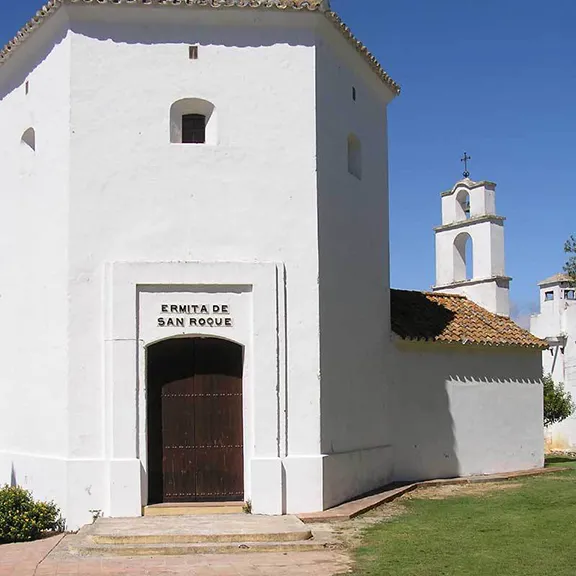San Roque in Cadiz province, is known as Gibraltar in the Fields of San Roque
By Nick Nutter | Updated 4 Jun 2023 | Cádiz | Villages |
Login to add to YOUR Favourites or Read Later


San Roque – City of Gibraltar in Exile
San Roque is undoubtedly one of the most interesting towns in the Gibraltar area due to its unique historical background and its well-kept Andalucian architecture. Since 1704 the town has been known as ‘Gibraltar in the Fields of San Roque’, due to the fact that most of the Spanish inhabitants who left the Rock in that year during the British invasion settled there. In 1706 King Phillip V of Spain made San Roque the official ‘City of Gibraltar in Exile’.


The Old Quarter at San Roque
The whitewashed old quarter of town was declared a Collection of Listed Historical Buildings in 1975. Old San Roque is full of notable monuments and museums, as well as typical picturesque Andalucian streets and squares. All the relics, records and iconography the Spanish Gibraltarians retrieved from Gibraltar are kept here, such as many statues in the Church. Another strong tradition is local gastronomy, the city is famous for its excellent tapa bars, where you can sample the most delicious local dishes.


Governors Palace, San Roque
San Roque also has one of the most proactive tourist information offices and an excellent way to see the city for the first time is via a guided tour. The tour includes The Governor’s Palace, an early 18th century, neoclassical structure that also houses a museum in which are artefacts from the nearby Roman site of Carteia, the old Military Command HQ that contains two museums and the Standard of Gibraltar and Saint Mary the Crowned Parish Church built in 1735 in a Tuscan and Baroque style.


Ermita De San Roque
The church was built on the site of the original shrine of Saint Roque that dated back to 1508. The church also contains priceless statues smuggled out of Gibraltar between the15th and 18th centuries. You will also visit the collection of listed historical buildings in the old quarter of San Roque: Calle San Felipe, Church Square, Plaza de Armas (where modern bullfighting, the so-called ‘Red Cape and Sword Technique’, was invented in 1720), Mirador Poeta Domingo de Mena, Calle Historiador Montero, Calle San Nicolás and Alameda Alfonso XI Square.
The tour continues to the bull ring and bullfighting museum. Built in 1853 the bullring is the oldest in the province of Cádiz and one of the oldest in Andalucia. Finally you visit Carteia, an archaeological site dating back to 700 BC. Carteia was a major Phoenician and Roman city.
The Borough Tourist Office (tel: 956 694 005) offers free guided sightseeing tours (weekdays, mornings afternoons and weekends). The tours can be arranged for groups of 8 or more persons in English, Spanish and Italian. The only necessary requirement is to book one week in advance.


Bull Ring San Roque
Although not part of the tour you are likely to be drawn to Plaza de Andalucia Square, the focal point of the city. Part of the film, ‘The Running Man’ was filmed there in 1963.
San Roque is actually full of hidden gems. In Simon Susarte Park you will find a statue of a goatherd of the same name. In 1704 a combined Anglo Dutch force occupied Gibraltar. A goatherd, Simon Susarte, knew of a concealed path up the precipitous eastern side of the rock and led 500 Spanish troops to Europa Advance and killed the guard. They moved to the Upper Rock and spent the night in St Michael’s Cave. The next morning they attacked the Signal Station but the alarm was raised and the English counter-attacked. 160 prisoners were taken including a colonel and thirty other officers; the rest were killed trying to escape. Whilst trecking around the town you may well have quenched your thirst at the María España Drinking Fountain. This 18th century drinking fountain is one of San Roque’s timeless symbols. The name appears in old songs and legends. The vision of the fountain is linked to old-fashioned water carriers who would put their water pitchers brimming with fresh spring water on their donkeys’ backs and supply it to the inhabitants of the City of San Roque. The fountain has always been a recreational area for the locals, a resting place for walkers and the inhabitants of the Arca Mountains when they came to the town centre. The town folk, who identify with the fountain, were the ones who give the plaza its name, against the wishes of the Mayor who had wanted his name to be used.


The City Park